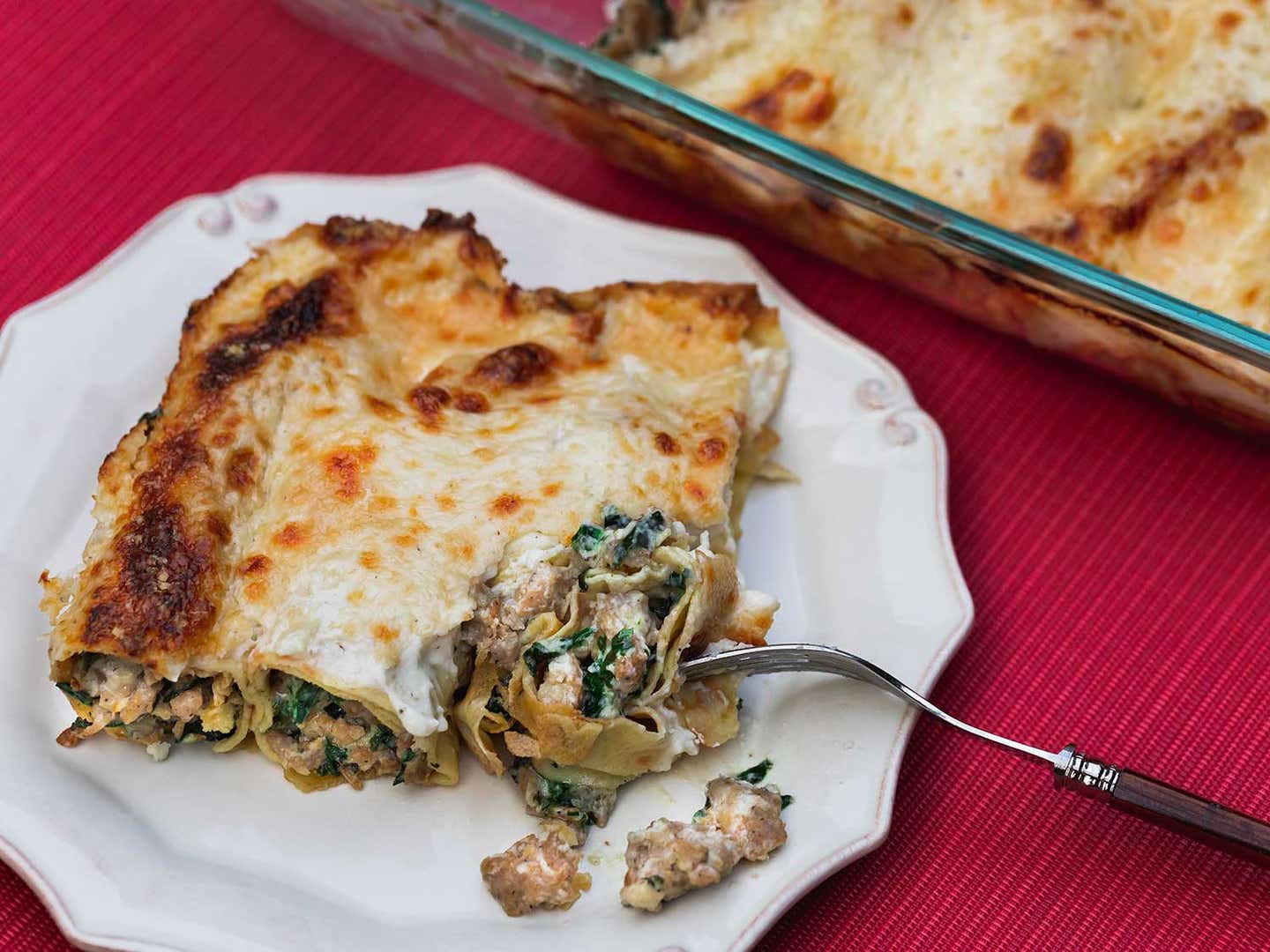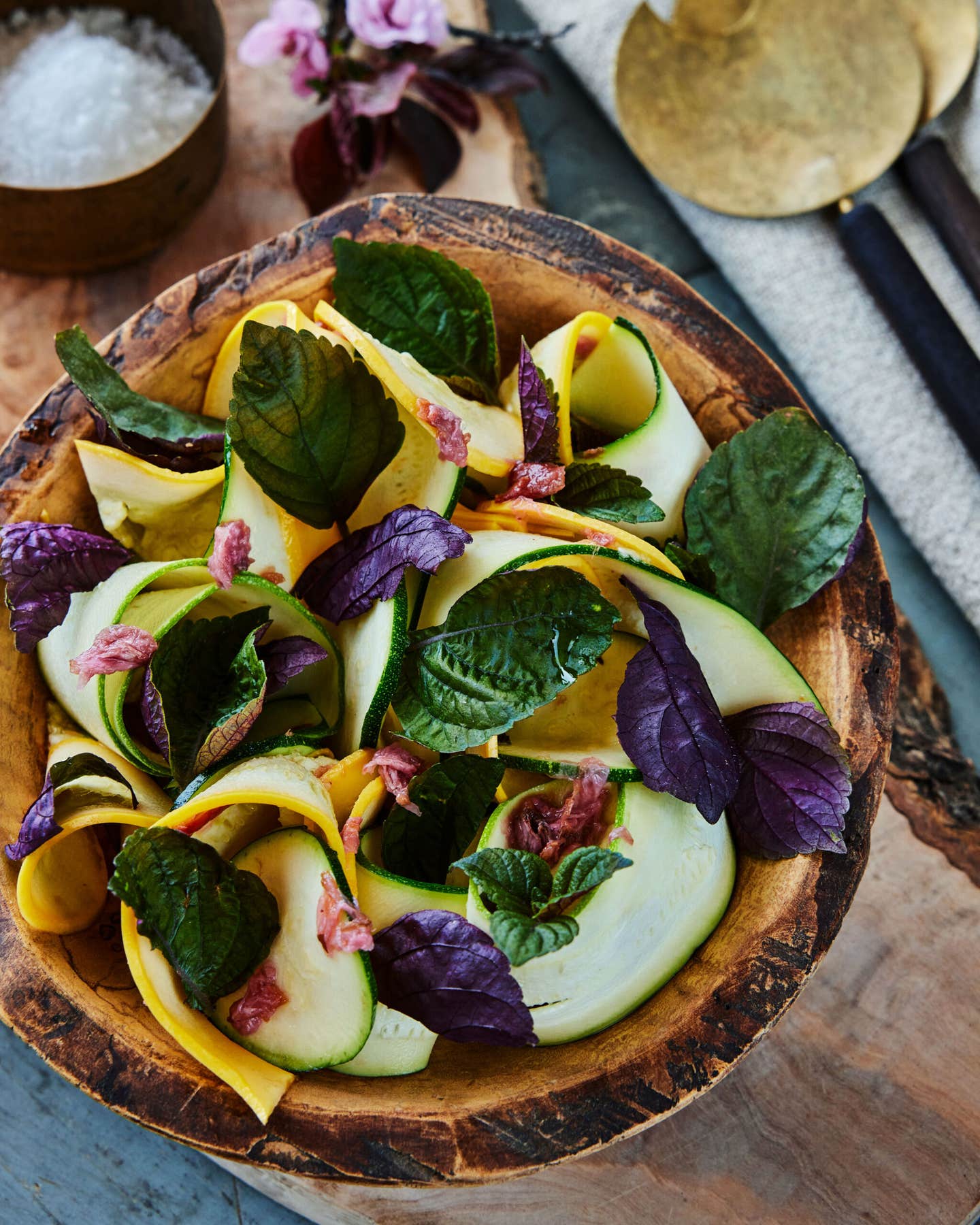
If You Like Lasagna, You’ll Love Crespelle
Traditional in Italy but uncommon in the United States, crespelle are the perfect winter weekend project.
The first time I ate crespelle, I had no idea what I was putting in my mouth. That was over a decade ago, at a neighborhood Italian restaurant in Brooklyn. I was a civilian—not yet a professional chef—and reading the menu casually, I mistakenly assumed that crespelle were some variation on baked pasta. My first impression (“Something’s wrong. This isn’t pasta.”) was replaced almost immediately with childlike wonder (“These are crêpes! And they are profoundly delicious.”)
An Italian crespella (that’s “crespelle,” singular) is virtually indistinguishable from its more famous French counterpart, the crêpe. Both are made with a simple batter of eggs, milk, flour, and melted butter. The technique for cooking them—holding a hot skillet in one hand, pouring in batter with the other, and tilting the pan in a circular motion to spread the batter evenly across its surface—is identical, with the end result being a delicate, thin, golden pancake. As with other culinary traditions spanning the two European countries, there are conflicting stories about whether the French invented the crêpe and brought it to Italy or if it was that famously trend-setting Italian noblewoman Catherine de’ Medici who brought crespelle from her native Florence to France. Perhaps neither tale is true, since both Russian blini and Chinese jianbing may well have been invented even earlier. Regardless, the Italians are unique in that their crespelle are most often layered with savory filling and then baked in the oven like pasta.
Depending on what region of Italy you visit, you might see crespelle rolled into tubes like cannelloni, layered like lasagna, or folded into a fan shape. According to Fabio Amadei, lecturer of food history and culture at Alma, one of Italy’s most prestigious culinary schools, “From one place to another [in Italy], the ingredients of the batter change as well as the fillings.” He explained via email that in Campania and other southern regions, crespelle are stuffed with ricotta and mozzarella and topped with tomato sauce before being baked, whereas in northern Italy, the filling is more likely to include vegetables like spinach or mushrooms. Northerners also switch out the red sauce for béchamel or dollops of butter and grated Parmigiano-Reggiano cheese. But like any Italian staple, crespelle recipes can change even within a region, depending on what town you’re in and whose household you’re visiting. One particularly delectable variant is found in the Veneto, where sweet crespelle bulge with an apple-cinnamon filling; another hails from Abruzzo, where “scripelle” (the local name) are rolled into fat cigars, bathed in broth, and sprinkled with pecorino.
Yet despite crespelle’s near ubiquity in Italy, most Americans have never heard of them. They’re not served in many Italian restaurants, no big-name chef is famous for making them, and they’re not trending anywhere on the internet. But hey, if crêpe cakes can come close to breaking the internet, there’s no reason why crespelle can’t join the party—especially in the darkest depths of winter, when casseroles appeal most.
My personal favorite crespelle recipe involves a sausage-and-chard filling and a generous slick of béchamel sauce amplified with freshly grated nutmeg and Parmigiano-Reggiano. The inspiration for this recipe draws from the northern Italian tradition—and, full disclosure, what I typically have in my refrigerator (screw that extra trip to the grocery store, especially in the middle of a pandemic!). My unconventional rendition, which hits most of the food groups, will satisfy a hungry family on its own, but it pairs nicely with a salad or any roasted vegetable side dish—and, of course, a full-bodied Italian red Nebbiolo or Aglianico. It’s an entree that strikes a nice balance between comfort and elegance.
I’m always astonished by the variety of textures in a single baked crespella. Crispy browned edges covered in bubbly cheese give way to an interior that’s soft and yielding like a brand-new pillow. Crêpes absorb sauce in a way that pasta cannot, their porous surface sucking in flavor like a sponge. And then there’s the filling, which you can really get creative with; I sometimes reach for mushrooms instead of ground meat, searing them before adding a touch of creamy béchamel as a binder. The only pitfall to avoid is having too much fat in your skillet when cooking the crêpes, as this can lead to soggy or mangled crespelle.
Making crespelle is more of a weekend project than a weeknight endeavor, but the simple ingredient list—and the fact that every component can be prepped ahead—makes the project manageable on any schedule. The finished dish is every bit as rewarding and indulgent as homemade lasagna, but with less hassle. Making fresh pasta is my favorite thing to do in the kitchen, but cooking crepes is quicker, easier, and less messy: Sometimes it’s nice to trade the pasta machine and unwieldy cauldron for a ladle and a nonstick skillet.
Seeing the face of a pasta lover when they try crespelle for the first time is priceless. Skepticism, awe, and excitement flash in quick succession, followed by a grin and, if you’re among Italians, perhaps some profanity-laced praise. It’s a wonderful moment, and it brings me back to the surprise I felt when I took my first forkful of crespelle. We may not be able to travel as much as we want to while we continue to battle this pandemic, but by making crespelle, at least we can bring a small taste of Italy into our homes.
Keep Reading
Continue to Next Story










